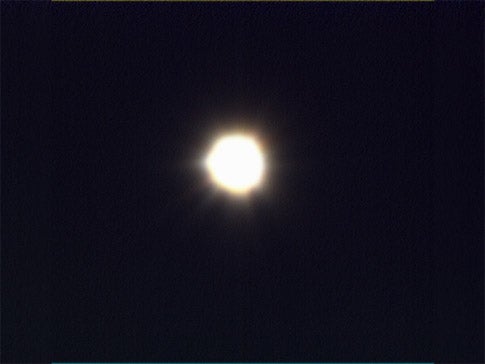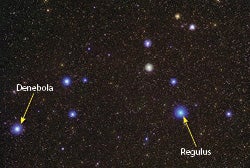
There are many glittering Celebrity Stars in the Hollywood of the heavens, astronomical A Listers who everyone looks up at on every clear night and fawns over. But for every celestial Taylor Swift, Beyonce, or Tom Cruise, there are hundreds if not thousands of other lesser-known stars.
We’ve picked five of these stars to pull out of the wings and thrust into the spotlight. These B-List suns might not be in the limelight as much as their cosmic Kardashian neighbors like Sirius, Regulus, and Polaris, but they are interesting and important in their own right and shouldn’t just be skipped over as we wander around the sky.
So here, then, are the Almost Famous Five.
Procyon
Shining with an impressive magnitude of 0.4, Procyon is the brightest star in the constellation of Canis Minor and the eighth-brightest star in the sky. If it was positioned anywhere else in that sky, it would undoubtedly be one of its superstars. Unfortunately, one of its nearest neighbors is Sirius, the brightest star in the sky; the stunning constellation of Orion, with the strikingly bright stars Betelgeuse and Rigel blazing in its opposite corners, is just a stone’s throw away too. Though Procyon is often ignored, it is in fact a fascinating binary star, only 11.4 light-years from us, comprising a white F5 class star orbited by a white dwarf companion.
Get out and look at Procyon while you can, because it is doomed… In around 10 million to 100 million years it will reach the end of its life by swelling up into a red giant star before fading away.
Denebola

Sphinx-shaped Leo is one of the most distinctive constellations in the sky. Its brightest star, magnitude 1.35 Regulus, shines at the end of the handle of the famous Sickle asterism at the lion’s front and is the 21st-brightest star in the sky. But if you can drag your eyes away from jewel-bright Regulus and sweep your gaze to the other end of Leo, shining on the tip of the great cat’s tail you’ll find Denebola. With a magnitude of 2.1, it’s fainter than Regulus, but this white main-sequence star only 36 light-years from Earth is 12 times more luminous than our own Sun. Because it lies very close to the ecliptic, Denebola is often joined in the sky by a bright planet or the Moon, so it is frequently imaged by astrophotographers.
Kochab
You can’t help but feel sorry for poor Kochab. Shining in Ursa Minor with a magnitude of 2, it is the 58th-brightest star in the sky and easily visible to the naked eye, even from the heart of light-polluted towns, and yet it lives in the shadow of the most famous star in the whole sky: Polaris the Pole Star. Polaris and Kochab are the same brightness, but Kochab has been relegated to just a star that people pass, or worse, mistake for Polaris when they are polar-aligning their telescope or motorized star tracker. This is a shame, because Kochab is a fascinating orange giant star, 50 times the size of our own Sun and 500 times more luminous.
So next time you’re lining up your scope or astrophotography mount, take a proper look at Kochab – it deserves it!
Saiph
With bright, ruddy Betelgeuse and brighter, sapphire-hued Rigel shining in its opposite corners and a belt of three ice chip stars tied tightly around its waist, Orion is a stunning constellation and one of the first star patterns stargazing newcomers look for and recognize. With a magnitude of just 2, Saiph, at Orion’s knee, is rarely given more than a brief glance, but that’s grossly unfair, because it is an enthralling faraway sun. A truly massive star, this class B1 supergiant is 15 to 17 times our Sun’s size and 65,000 times more luminous. It is only so faint in our sky because it is 720 light-years away, so Saiph’s brilliant light is dimmed.
Alkaid
Forming part of the constellation of Ursa Major, the asterism known to some as The Big Dipper and to others as The Plough is probably the most famous pattern of stars in the whole sky. Its two most famous members, limelight-hugging Dubhe and Merak, are known as The Pointers because they point the way to Polaris, the Pole Star. Overshadowed by this celebrity pair, shining on the opposite end of the Big Dipper, at the very end of its curved handle, is magnitude 1.9 Alkaid, the 35th-brightest star in the night sky. Alkaid is perhaps best known for being the last star starhoppers pass as they make their way down the Great Bear’s curved tail and “Follow the arc to Arcturus,” but it’s much more than that.
Alkaid is a young blue-white main sequence star, 700 times more luminous than our own Sun – but more importantly, it is an imposter! Alkaid is not actually a member of the Ursa Major Group, the small cluster of stars that draw the pattern of the Big Dipper in our sky. It just happens to lie in the same direction as them as seen from Earth and is actually moving in a totally different direction. So, in far-future years, Alkaid will drift away from the Big Dipper, distorting and eventually wrecking its shape.









